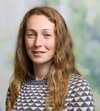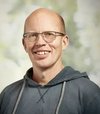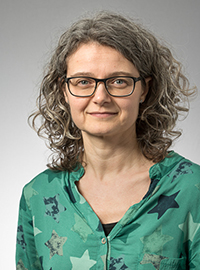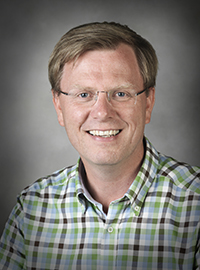In Denmark MIXED is implemented by Innovation Centre for Organic Farming and Aarhus University in collaboration. The project is working with two groups of farmers practicing MiFAS (Mixed Farming and Agroforestry Systems) in different ways.
Agriculture in Denmark can be characterized as highly specialized, intensively managed and in general very productive. The highest concentration of livestock is in the western part of the country, where soils in general are more sandy and less fertile than in the eastern part of the country.
Organic Agroforestry Systems
Many organic farmers in Denmark are taking the potential contributions of the organic system to public goods into consideration - such as biodiversity, c-sequestration, animal welfare and environment (less leaching of nutrients, and protection of groundwater, streams, fjords and sea). Integration of trees and shrubs with agricultural crops and animal husbandry is, however, not a common practice in today’s organic agricultural systems. The drivers for the group of farmers that MIXED is working with is specifically to improve biodiversity, c-sequestration, animal welfare and environment.
The group of farmers are incorporating trees/shrubs on their individual farms in combination with crops, cattle or pigs. The agroforestry systems established by the farmers on their land represent a huge diversity in age, function and spatial arrangement of trees/shrubs. The organic agroforestry farms are located in different parts of Jutland. Several of the farmers are part of a larger agroforestry network recently established by Organic Denmark.
Nutrient cycling and green biomass production
Denmark is surrounded by shallow, nutrient vulnerable estuaries. Here agriculture is practiced close to the sea, and almost all drinking waters are pumped from rural groundwater reservoirs. In particular, some agricultural areas are highly vulnerable to leaching, and especially this is critical when combined with intensive livestock production. Such an area, situated around one of the inner parts of ‘Limfjorden’, is studied. Here, initiatives are taken to transform agriculture, including more grasslands and nutrient cycling, for higher nutrient and greenhouse gas efficiency, resilience to climate and other change, and multiple landscape level benefits including protection of the environment as the result. The transformation is linked with new biomass technology though which the grass is turned into protein fodder and feed, with side streams being used for cattle fodder and for biogas production with potentials for both improved soils, energy production, fertilisers and various food- and non-food products as outputs.
Insights from farmers and stakeholders regarding agroforestry with livestock: Challenges, dilemmas, and potential Solutions
Practice and technologies
Regulation and subsidies
Economy and production
Knowledge and research
Communication and advisory
Solutions and ways forward
Within network 1, a key challenge identified was the lack of knowledge on designing new agroforestry systems with livestock. Specifically, there is uncertainty about a) how to design the systems to maximize the effects on biodiversity, b) how trees in temporal systems impact arable crop production, and c) the trees’ performance in providing supplemental feed on the farm. Lessons learned from network 1 pilot studies and data collection are summarized in the produced leaflets:

Laura Attrup Bille
Mail: laab@icoel.dk
Phone: +45 24 63 47 10

Jesper Fog-Petersen
Mail: jefp@icoel.dk
Phone: +45 41 90 20 14


Anne Grete Kongsted
Mail: anneg.kongsted@agro.au.dk
Phone: +45 8715 7993
Mobile: +452243 5540

Tommy Dalgaard
Mail: tommy.dalgaard@agro.au.dk
Phone: +45 8715 7746
Mobile: +45 2070 6132